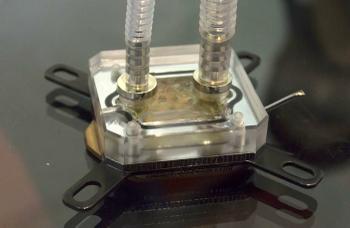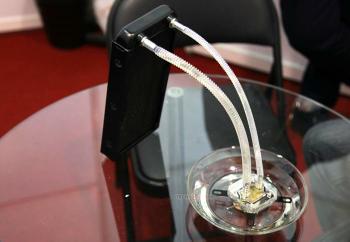For those who choose an all-in-one liquid cooling solution hoping for greater cooling efficiency and noise reduction but are peeved by the different noise profile emanating from the cooler pump and/or actively cooled radiator there may be a solution on the way. PC components and accessories maker Raijintek has been demonstrating a passive liquid cooler at Computex 2016 in Taipei.
As explained by TechPowerUp, which witnessed the cooler in action, this closed loop AiO cooler has no moving parts. Rather the heatsink warming up induces the specially formulated cooling fluid within to flow around the close loop. Thus the system doesn't require a pump (potential for noise and failure) and eschews cooling fans in the radiator portion, cutting out another potential noise/moving parts failure source.
The liquid flows thanks to the same science behind how heat-pipes work. TPU elaborates; "Heat from the source (your CPU) causes the special coolant to change phase to vapour, move to the heat-exchanger (radiator), where it condenses back to liquid, and flows back down to the block." Another report on the cooler by BitTech informs us that the "special coolant boils at under 40°C, and different sized pipes to create a pressure imbalance and force the liquid to evaporate in one direction only and thus generate flow."
Note the in/out flow pipe size differential
Apparently Raijintek has spent "vast amounts of R&D budget developing this technology," and with its patents in hand is ready to launch the system as demonstrated. Likely for dramatic effect, Raijintek demonstrated the cooler working to cool boiled water straight from a kettle but we would have preferred to see it in a high-end PC system running some modern gaming/tech demos, for example. Please note that to get the cooler to function it is a necessity to install the radiator portion of the device at a point somewhere above the CPU being cooled.
It will be interesting to hear and see more of this passive AiO liquid cooler from Raijitek, perhaps as launch gets nearer. Key cooling performance figures are necessary to judge if it can make more powerful fanless passive PC systems a reality.









